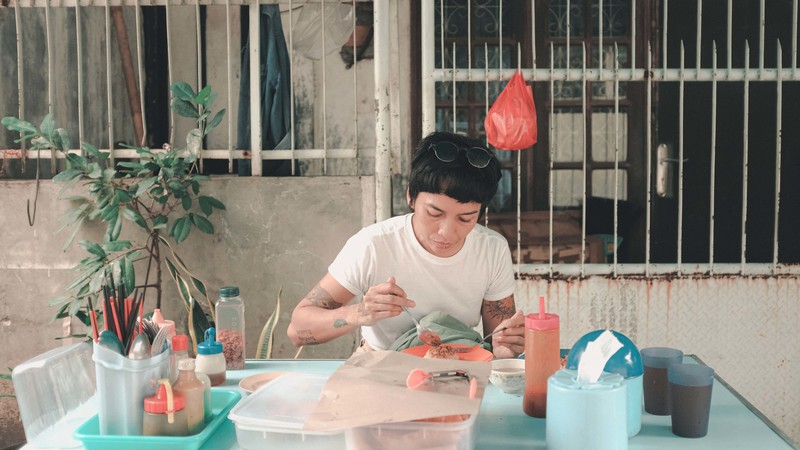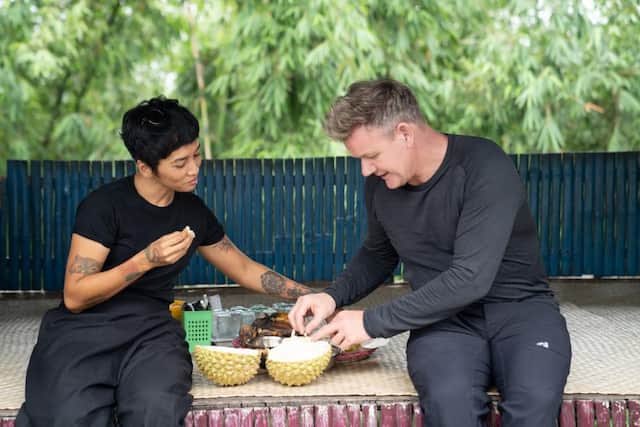Ade Putri diligently introduces Indonesian culinary history and culture to the world, and teaches us to look further into the experience and processes behind creating food and the eating experience, than just saying, “tasty” or “not tasty”. For that she is proud to call herself as a culinary storyteller.
Food is one of the media by which we can introduce and promote Indonesia, as well as being the driving force of cultural diplomacy since Indonesian cuisine is also considered to be one of the most sought-after culinary delights by world’s citizens. We can take a look CNN’s 2011 report on a list of the most delicious foods in the world featuring two Indonesian dishes, rendang and nasi goreng. This shows that Indonesian food has great potential.

Rendang, nasi goreng, and many other Indonesian dishes have many advantages: rich in spices and very exotic, most of which are still unknown not only in the world, but, apart from the obvious dishes, among the Indonesian people themselves. Exploring the culinary riches of its more than 17000 islands, is not an easy thing.
After culinary journalists, food bloggers, and influencers, culinary storytellers are the latest figures to emerge who have become the spearhead of promotion and information media on various platforms. The have the ability to tell the taste and experience of a fine meal, either through visuals, writing, or by speaking directly through uploaded video content. Telling stories with data will give strength to the Indonesian culinary world because in many areas they have a noble culinary heritage from their ancestors, but limited data, documents, and manuscripts, this is where a food storyteller struggles to tell the culinary treasures to public.
“Basically, a culinary storyteller is the same as a culinary journalist who writes about food, the difference may be compared to food bloggers. They have to know, to find out the newest or most popular places to eat, but a culinary storyteller may not know new places to eat, but he knows the food. For example, why is there more Batak food in Jakarta than food from other regions? This is thanks to the observation and lengthy interviews from various sources.” Ade explained.
Ade Putri Paramadita or familiarly called Ade Putri is the one who brought this profession to life. Her love of telling about food through writing has been done since she was a child. She also found her space when she worked as a lifestyle journalist and was invited to broadcast on a radio station to host events related to food.
“The more I met people and went to places to eat and especially restaurants, what became interesting was when I went to a warung (food stall) in a certain area, I discovered there is more to tell about the food in the warung. So I know more, not only that food is shaped and made with what ingredients, but the story behind the food, whether it is passed down from generation to generation or cultural accumulation occurs, that’s where I get a lot of things that I can write about.” Said Ade Putri.

In 2012, Ade Putri was invited by culinary expert William Wongso to create a movement and the Aku Cinta Indonesian Food (I Love Indonesian Food) or ACMI community was born that made many Indonesian dishes more exposed. ACMI brought her to various places, including remote areas around the country to learn about the people, the culture, and the food. Ade Putri shares the experience and the food through various channels and the world through various events. She also accompanied Gordon Ramsay on a trip to West Sumatra and appeared on his Discovery Channel series Uncharted.
As a culinary storyteller, she is very responsible for the data she finds in the field. Ade Putri admitted that to find information she did not want to use Google. She prefers to talk to becak drivers, taxi drivers or local people who are on the roadside to find out what they eat every day. Through this approach she got a lot of real information to be observed and shared.
“I’m more about my experience than my personal opinion. That we like the food is not a barometer for people to like it too. For example, I like to eat crickets, but does everyone like it? Here we better tell the experience of eating crickets, what they taste like, what to pay attention to when eating them, and so on. And a culinary storyteller doesn’t need to have a certain platform because we store the data we get and it’s just a matter of how we convey it.” Said Ade
When asked what is she most concerned about the Indonesian culinary scene? She straightforwardly answered: consumer patterns. According to Ade Putri, with the development of social media, people are increasingly FOMO (fear of missing out) and something that is posted is often used as a benchmark, and encourages people to participate in consuming it otherwise it will be outdated.
“On the one hand it is good for the economy of some parties but will cause an imbalance of certain foodstuffs. For example, palm sugar. We know palm sugar is a trending food ingredient, not only for blending coffee but also for making soy sauce and palm-based wine. Due to the popularity of palm sugar which causes high demand, we will run out of palm sugar stock somewhere. Another example, now we start consuming sorghum. Meanwhile, sorghum is a source of carbohydrates for the people of East Nusa Tenggara. Prioritize them to eat sorghum, not to be forced to eat something sent from Java. This is the context of fellow carbs, right, except in an area that lacks protein, it can only be sent from another area. So, talking about the ecosystem is not very good, there is already overconsumption. This is our homework, to put this right.” She conveyed.
Ade Putri’s favorite food?
She really likes Sambal Roa. Although she has Manadonese heritage, Ade Putri knows the food when she grows up.
Three Favorite places to eat in Jakarta?
Warung Mak Dower on Jalan Pemuda, East Jakarta. This is one of the places she likes to bring guests to introduce Betawi food. The choices are many and the food is more like home cooking with lots of bawang goreng, petai and jengkol. Here he can tell you all about food.
Tinoor Manado on Jalan Gondangdia Lama. This is more of a memory because Ade Putri lived around the area before. She learned to eat spicy at this restaurant with her mother. She said the Panada at this restaurant is still the best she had found in Jakarta. The mix and combination of bread and fish is just right.
Nasi Liwet Solo Bu Har on Jalan Cinere Raya. Ade Putri has a mother who is very good at cooking. Only Bu Har can beat her mother’s super delicious Nasi Liwet. Ade Putri gave a thumbs up for the authenticity of her Nasi Liwet and she is also able to find a laying hens complete with uritan (chicken eggs that fail to develop) and delicious areh (coconut milk that is cooked for a long time until it releases oil) and steamed eggs.







